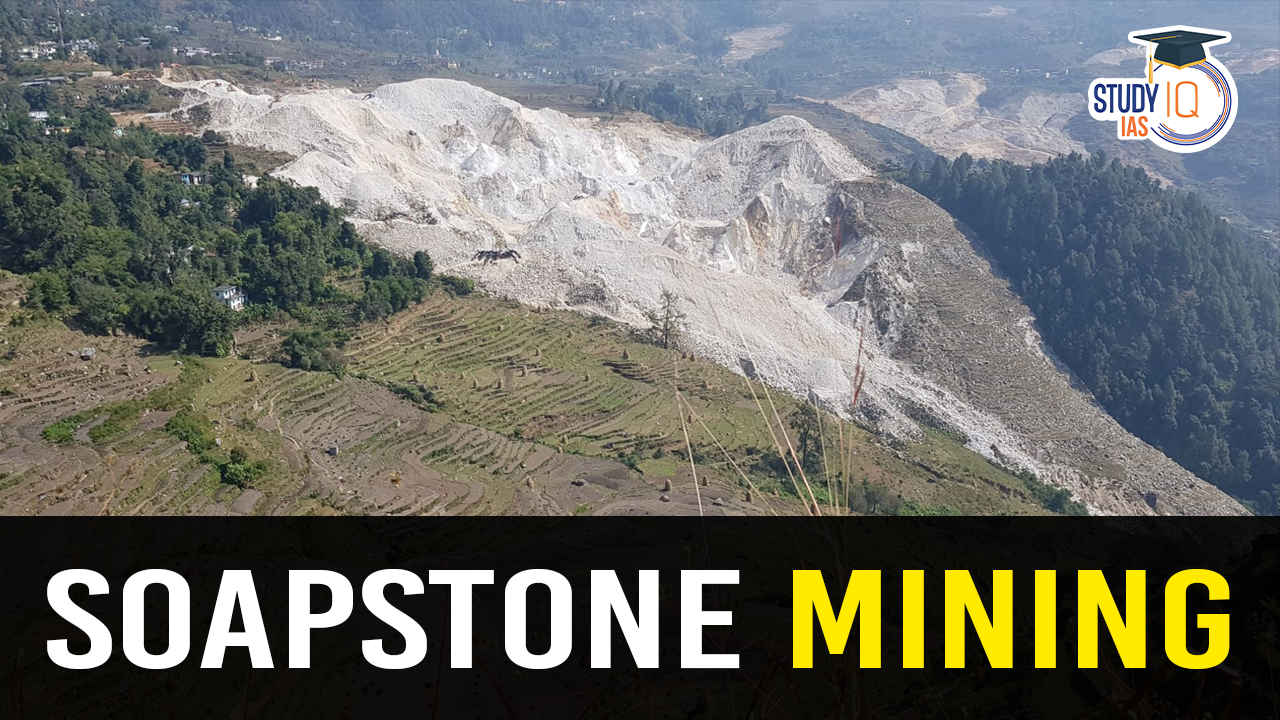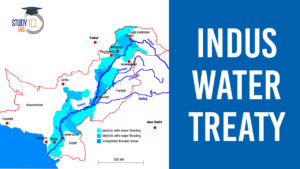Table of Contents
Context: The Uttarakhand High Court has suspended all mining operations in Bageshwar district, citing environmental, socio-economic and safety concerns after taking suo motu cognizance of a news article.
More in News
- The decision was based on alarming findings submitted by court-appointed commissioners regarding soapstone mining in the area.
- Mining activities have caused significant damage to dwelling houses, increasing the risk of landslides.
- The area is home to diverse flora, including oak, cedar and cypress trees & wildlife including leopards, wild boars and foxes.
About Soapstone
- It is a metamorphic rock primarily made up of talc along with varying amounts of chlorite, pyroxenes, micas, carbonates and other minerals.
- Largest producer of soapstone in India: Rajasthan
- Major Deposits:
- Rajasthan (Udaipur & Bhilwara) – 57% of India’s Deposits
- Uttarakhand (Bageshwar & Almora) – 25% of India’s Deposits
Properties
- Soft texture (can be scratched with a fingernail due to high talc content).
- Heat-resistant and non-porous.
- It is durable, inert and has a soapy feel.
Uses
- Industrial applications: Talcum powder, ceramics, cosmetics and paints.
- Thermal applications: Linings in stoves, fireplaces and laboratory countertops due to heat resistance.
Environmental and Safety Concerns
Land Subsidence
- It is a significant issue in Uttarakhand which is magnified by mining activities.
- Eg. Joshimath Example (2022) – cracks in roads and houses due to subsidence.
- Affected Areas in Bageshwar: Kanda-Kanyal and Kanda are highly vulnerable.
- Cause: Mining on lower slopes undermines the stability of upper slopes, where villages are located. The soil in these areas is loamy and loose, prone to erosion and destabilization, especially during monsoons.
Pollution
- Mining activities contribute to water scarcity and pollution.
- Transportation of mined materials intensifies air pollution.
Lack of Safety Measures
- Absence of green belts and retaining walls around mines.
- Lack of essential safety protocols such as buffer zones, slope monitoring and protective structures.
Cultural and Heritage Concerns
Kumaoni Bakhli Houses
- Traditional houses of the region, known for their seismic resilience are now at risk due to land subsidence.
- Foundations of many such houses have shifted or been damaged.
Kalika Temple
- A 10th-century religious site in Kanda with cultural and historical importance.
- Current Status: Cracks in temple floors due to land subsidence.
Local Traditions
- Kanda tehsil is renowned for folk music, dance and handicrafts, which face disruption due to mining activities.


 Places in News for UPSC 2025 for Prelims...
Places in News for UPSC 2025 for Prelims...
 Vizhinjam International Seaport Project,...
Vizhinjam International Seaport Project,...
 Indus Water Treaty 1960 Suspended by Ind...
Indus Water Treaty 1960 Suspended by Ind...





















